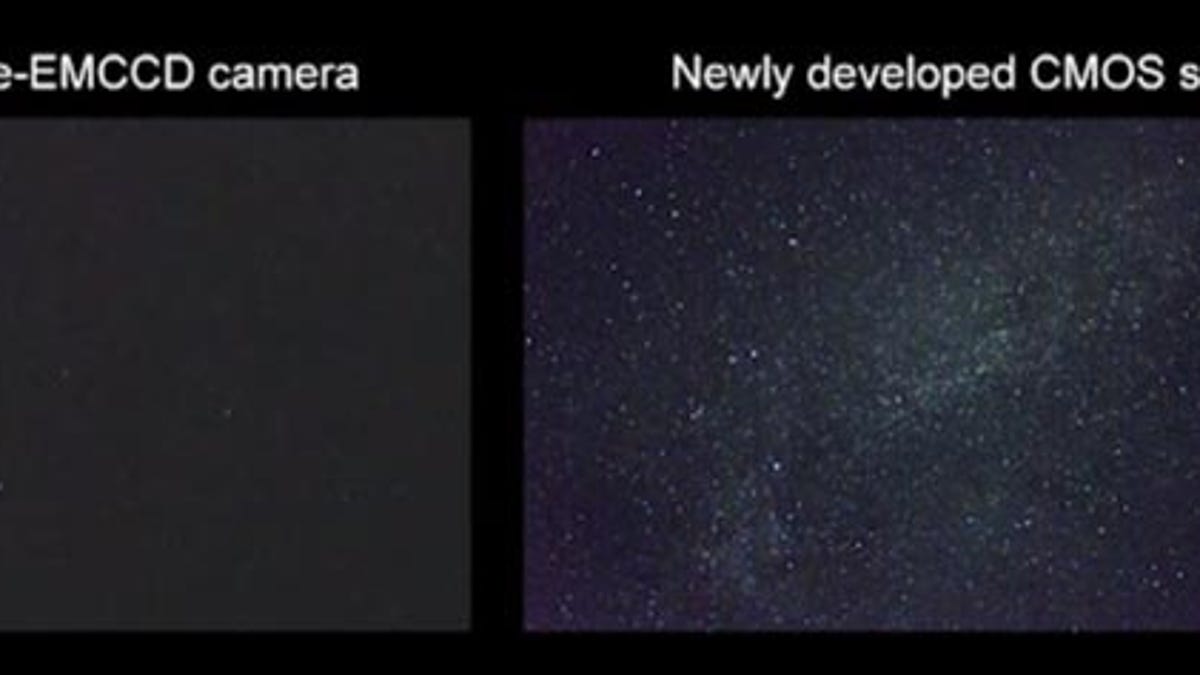Canon video sensor prototype can see in the dark
It's only a research project now, but Canon can see for its super-sensitive sensor in nighttime jobs like astronomy and security. It can record by the light of a crescent moon.

Canon has developed a video sensor that can capture images illuminated only by a glowing incense stick or the light of a crescent moon.
The sensor gathers light by using extremely large pixels -- 7.5 times the surface area of those in the 18MP EOS-1D X professional SLR, whose 35mm full-frame sensor is the same size. In conjunction with that approach, "the sensor's pixels and readout circuitry employ new technologies that reduce noise, which tends to increase as pixel size increases," Canon said in its announcement. Check the link to watch Canon's sample video.
Canon has fallen behind rival Nikon -- which relies on partners such as Sony and Toshiba to make its sensors -- when it comes to raw image-capture performance. But the company maintains an edge over Nikon in SLR video performance and video-specific cameras, such as Canon's C300 and C500.
It's no surprise to see Canon pushing that advantage. The low-light performance of new digital cameras can save videographers time and money when it comes to setting up adequate lighting.
Canon has specific uses in mind for this technology, to include astronomical and natural observation, support for medical research, and surveillance and security applications. The company will exhibit the prototype at the Security Show 2013 this week in Tokyo.
There are plenty of caveats to Canon's sensor, though. It's not clear how well the sensor performs when it comes to factors like color fidelity, resolution, fast readout, and, of course, manufacturing expense. Full-frame sensors, offered only in high-end cameras, are expensive to make under the best of circumstances.

